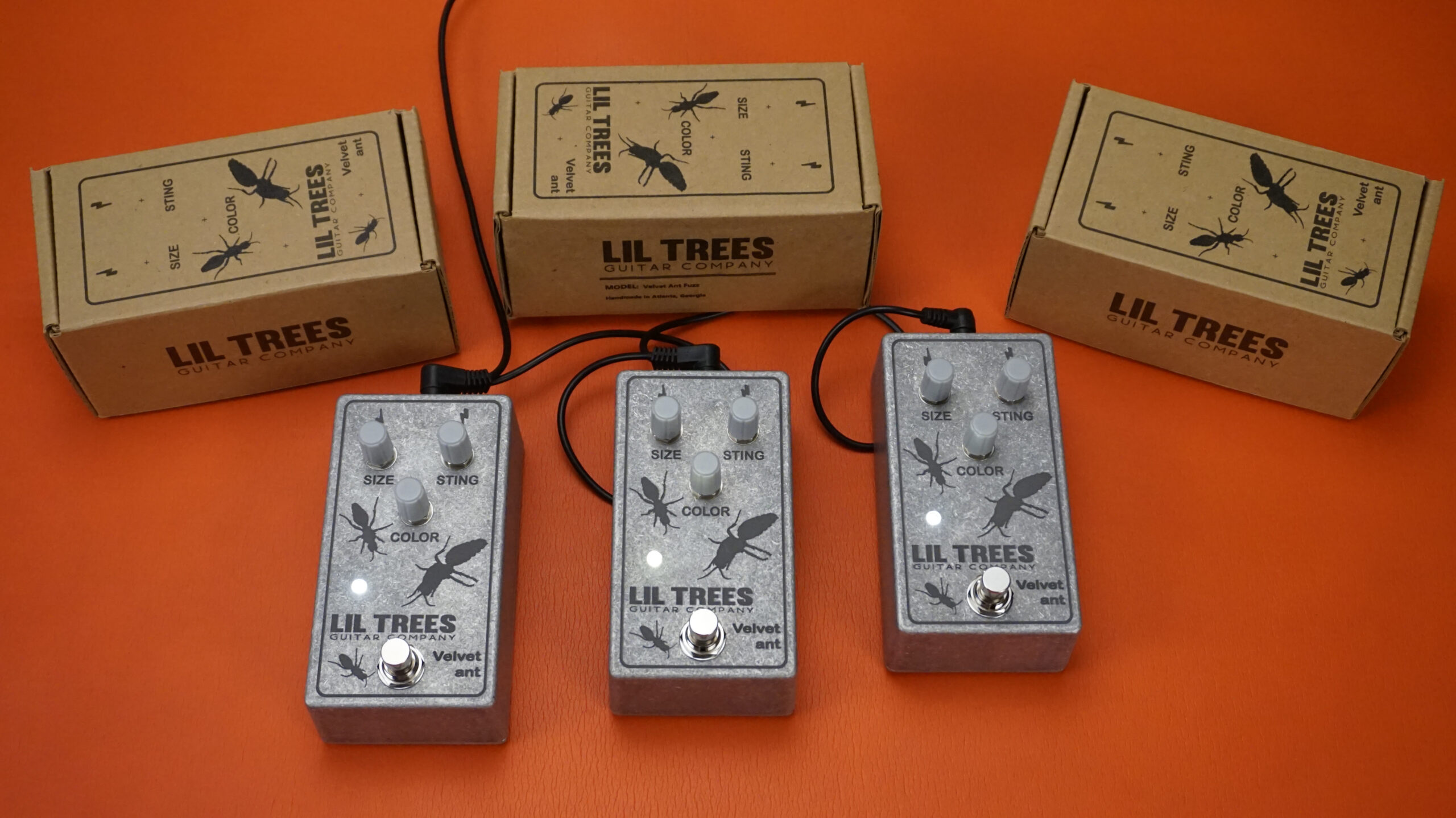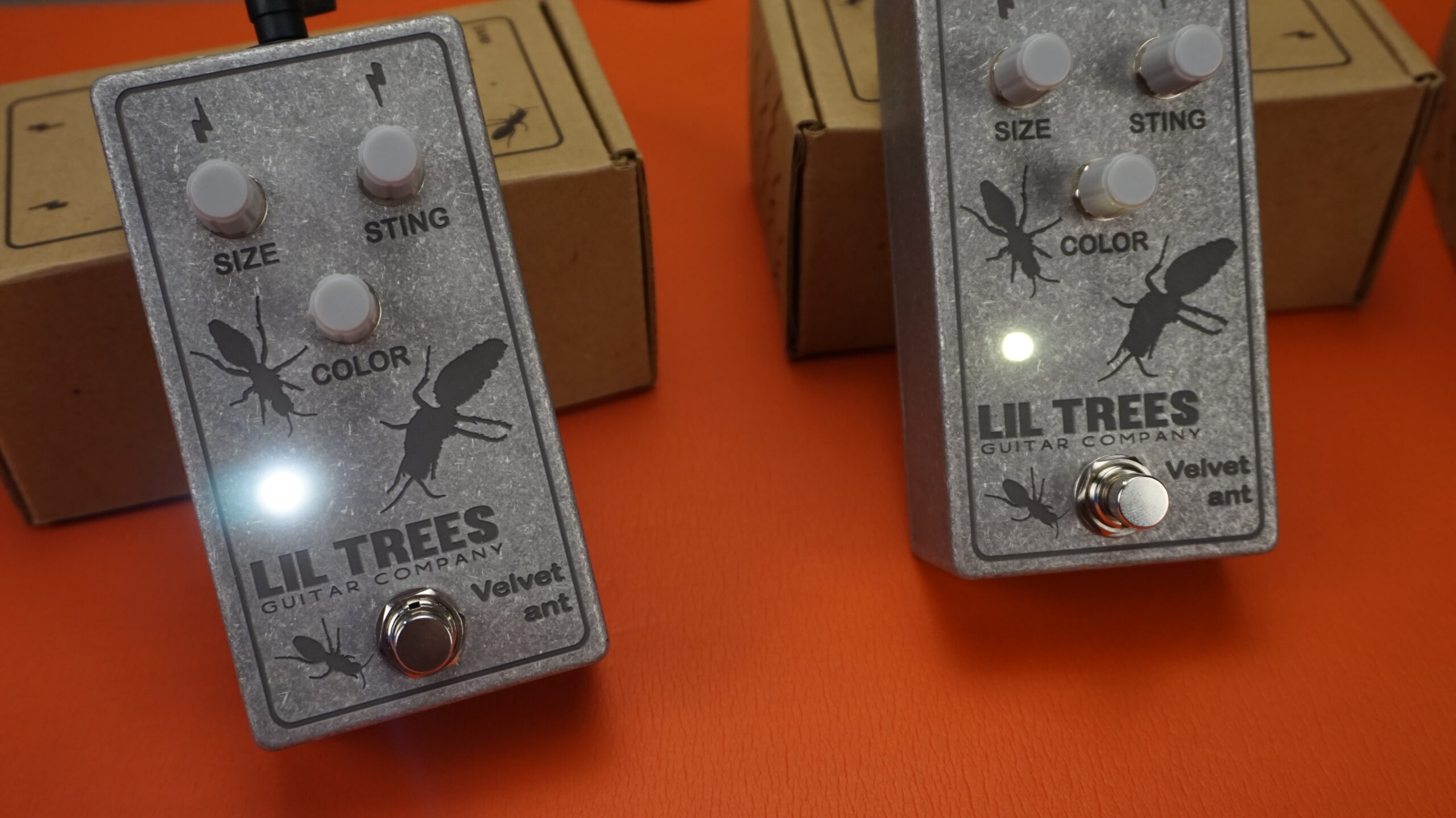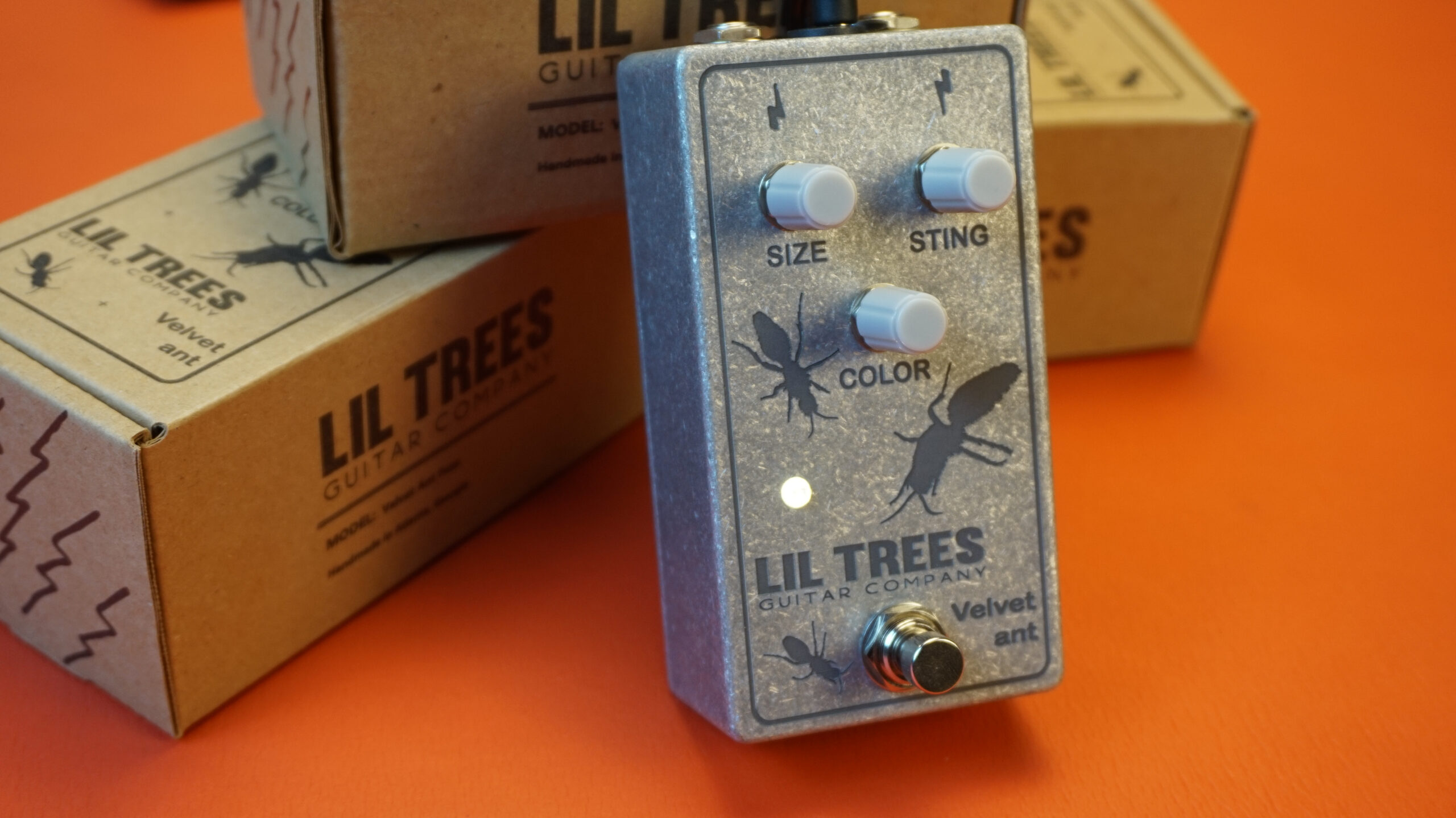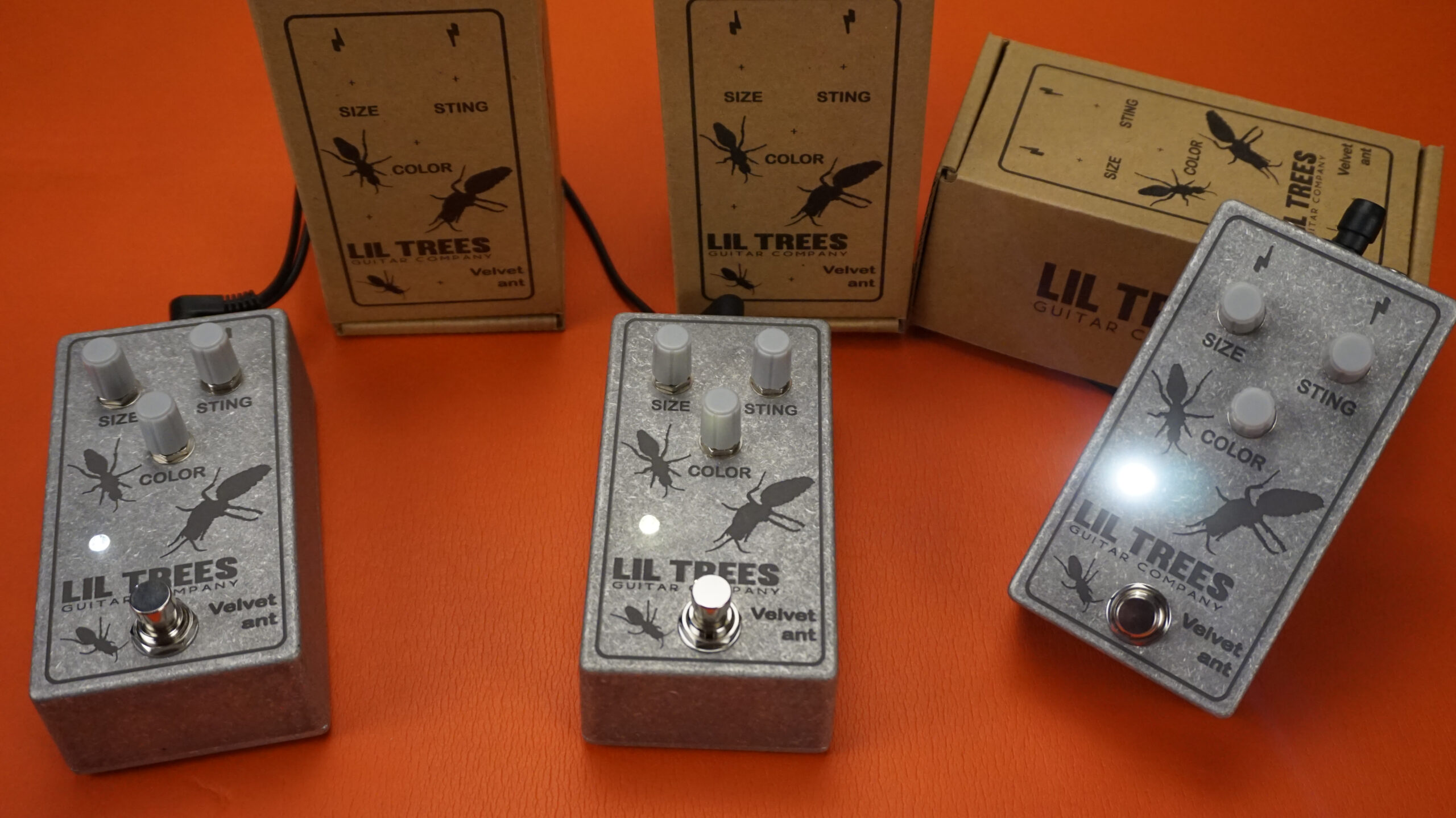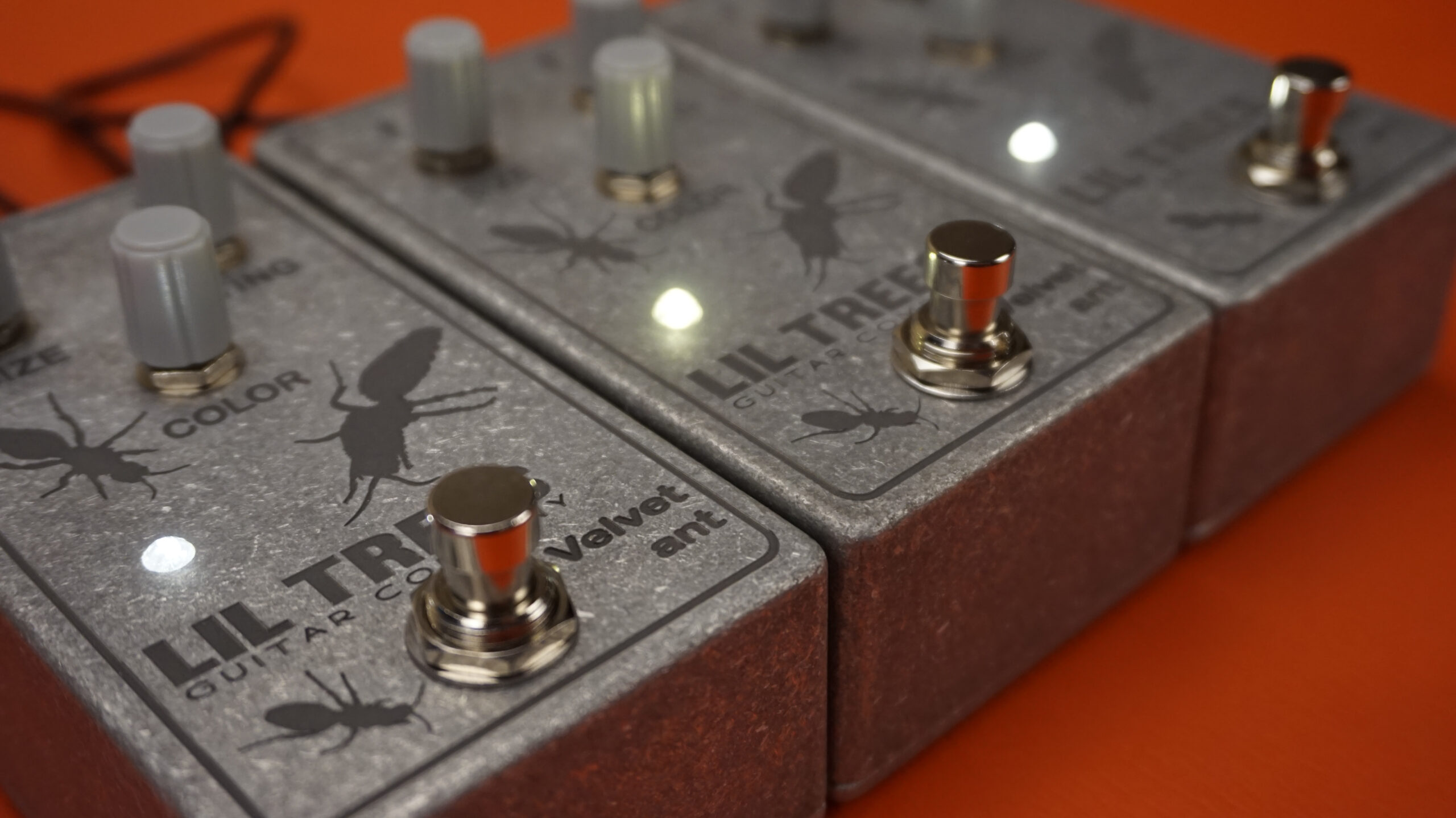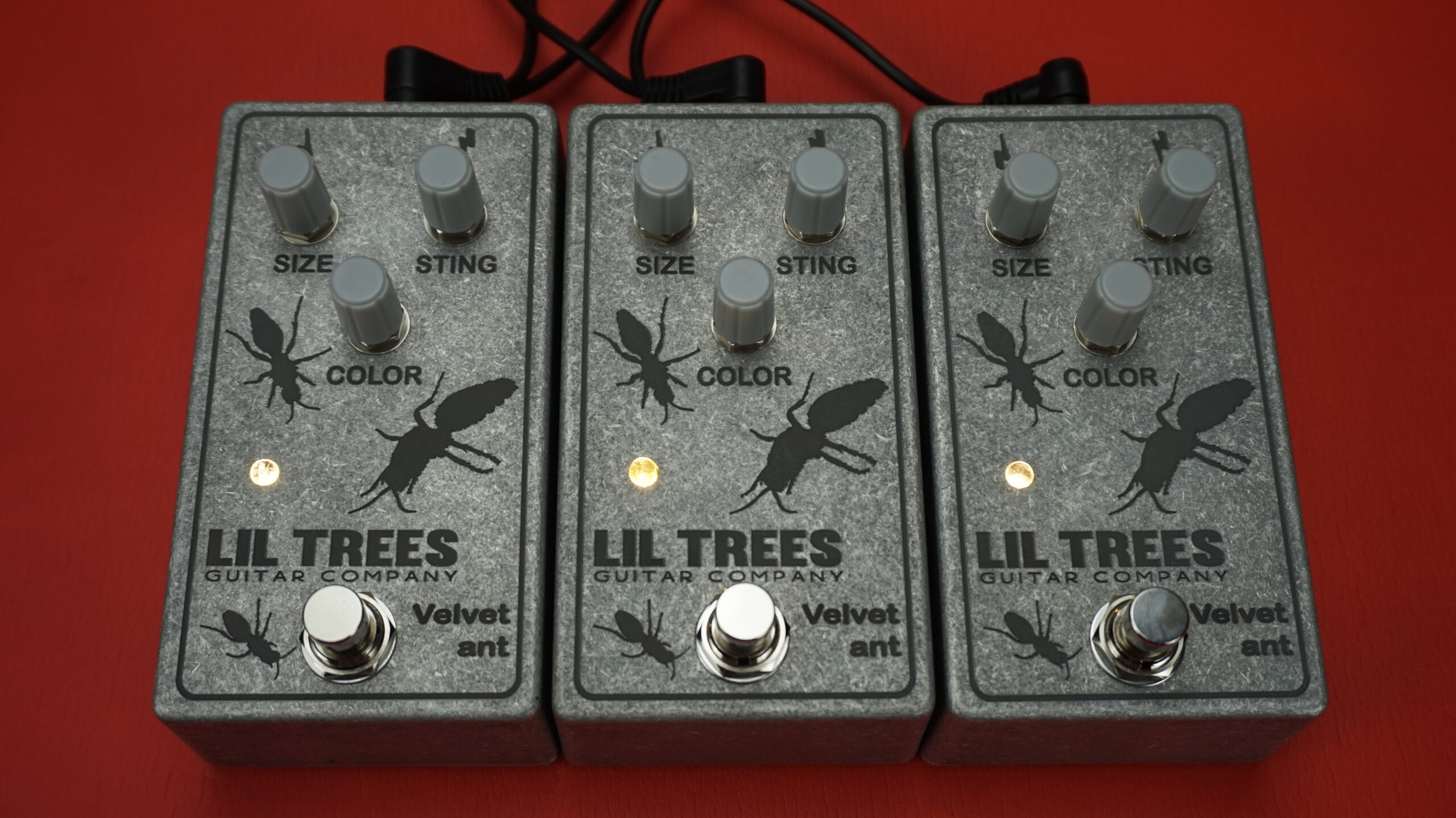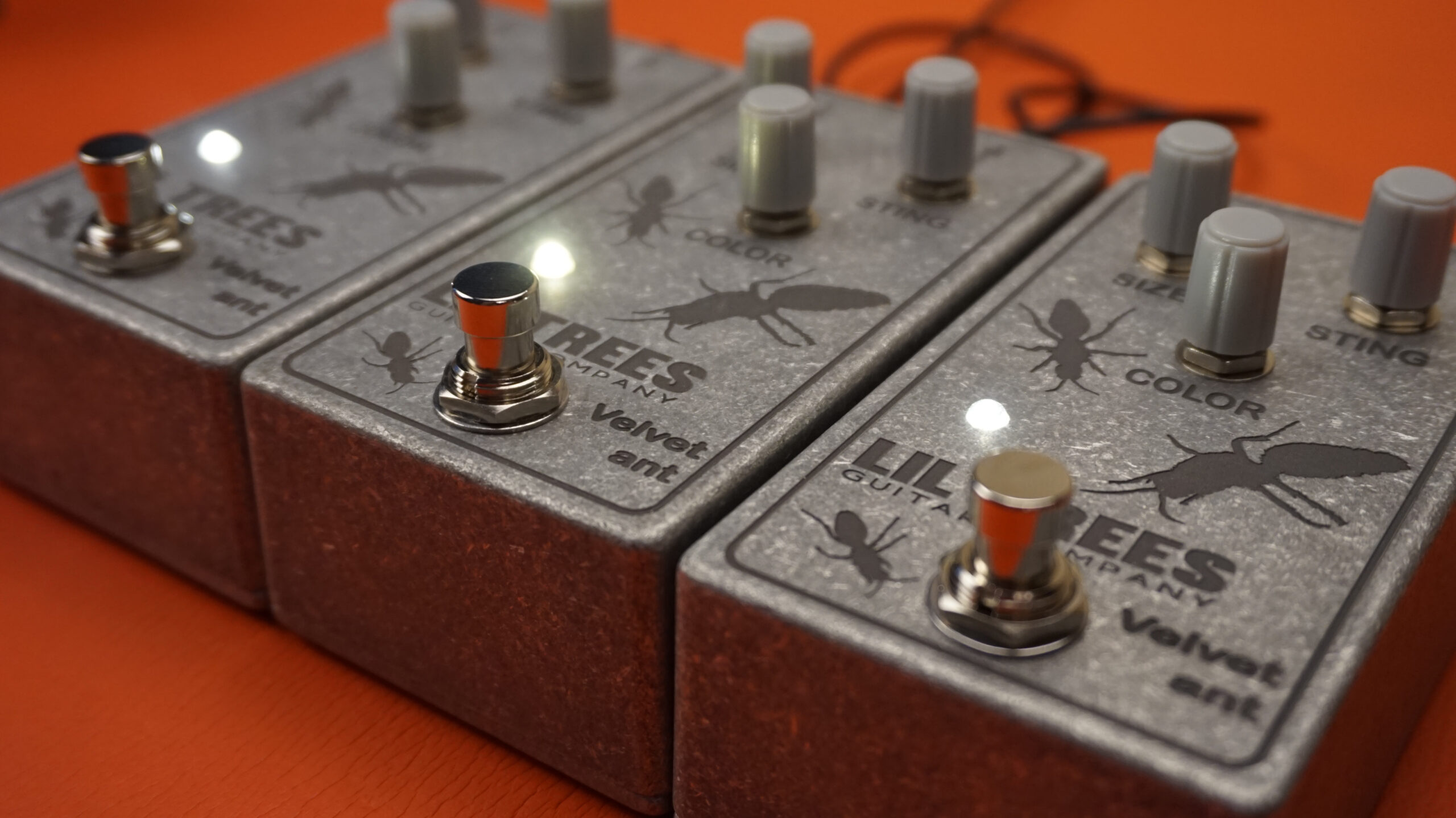VELVET ANT FUZZ PEDAL
The Velvet Ant is a Germanium based three transistor topology fuzz using a three-control layout. Constructed using the popular 1590_n1 aluminum enclosure with back mounted jacks for audio and power ensures the Velvet Ant Fuzz fits easily onto any pedal board. The logo, bugs, and lettering are fiber laser-engraved physically into the aluminum and enamel painted so the artwork really pops. This model is named after an insect called the Velvet Ant or Cow-Killer found here in Georgia. The velvet ant is known for dropping cows and just about killing people with a single sting from its almost half inch long stinger. This is the pedal version of that kind of stinging potential. Handmade in Atlanta, Georgia using the highest-quality components available, and designed with sturdy construction, spacious component placement, and a chassis-mounted assembly. Every element of this unit is ruggedly built to provide a lifetime of uninterrupted use.
About the pedal:
The Velvet Ant Fuzz is the Lil Trees take on the hard to come by Burns Buzzaround. Having worked in and around guitar shops for over two decades, I’ve had the pleasure of seeing many rare pedals; usually in a non-functioning condition. While familiarizing myself with the circuit, I'm also working to get a unit working again. It was through an experience such as this that I was able to get my hands on an original Buzzaround. I remember the first time I was able to play with the unit, it was a memorable experience, the thing sounded spectacular! It had a lively, intense, cutting fuzz when playing chords. It had a fast tracking low end in addition to its responsive resonant frequency single note quality. When playing lead, it compresses single notes without fizzling out while still having a large amount of sustain. Indeed, unique when compared to other fuzz devices from its time that always seem to sound over the top and unwieldy.
Controls:
The Velvet Ant Fuzz offers three parameters of control.
There are three knobs, “Size” for volume level, “Sting” for the gain/fuzz control, and “Color” for the tone control. These controls will prove to be more influenced by each other than other pedals you may have used before. The reason for this has to do with how each of them is controlling voltage and bias in the circuit, rather than specifically controlling a parameter of a sub circuit.
Special Features:
Like with many Lil Trees effects, this circuit is equipped with a polarity protection circuit. Polarity protection circuitry is a special circuit that protects the pedals circuitry from over voltages and from the wrong polarity being introduced. Unlike many protection circuits, it will not destroy itself protecting the circuit for an amount of time but, it will protect the circuit while also not destroying itself. This means that it is impossible to bring harm to the internal circuit by accidentally introducing the wrong voltage or polarity of power at the power input jack. This is very useful to musicians because of obvious reasons... Like, how sometimes things get plugged into the wrong power source, or maybe you weren’t completely sure whether that power supply had a negative or positive tip. With a polarity protection circuit, one need not worry over these details. If it isn’t the correct supply, the device simply will not power on, and if it’s the correct supply type, the device will perform satisfactorily. This simple protection circuit ensures the device will live a long life with no interruptions.
Tonal description:
The sound is a bit like the best Big Muff you've ever heard, without the classic mid-range scoop. This pedal will cut and sustains like a Muff, but is overall much tighter feeling. No scoop or woofiness, just raw, aggressive, loud, rude fuzz. Using the “Color” control you’ll be able to beef it up like crazy or thin it out a ton. When you thin it out with the color knob, you can more than make up the volume using the “Size” knob. All in all, it can sounds "vintage", but it is also surprisingly capable of a modern guitar tone. Modern in an almost surprising way considering the germanium transistors used.


